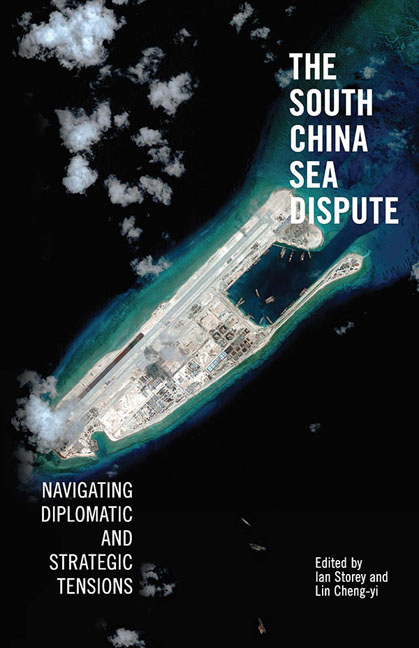Book contents
- Frontmatter
- Contents
- About the Contributors
- 1 Introduction
- 2 Untangling a Complex Web: Understanding Competing Maritime Claims in the South China Sea
- 3 China Debates the South China Sea Dispute
- 4 Taiwan's Evolving Policy towards the South China Sea Dispute, 1992–2016
- 5 The South China Sea: Primary Contradictions in China–Southeast Asia Relations
- 6 Rising Tensions in the South China Sea: Southeast Asian Responses
- 7 The Philippines and the South China Sea Dispute: Security Interests and Perspectives
- 8 A Vietnamese Perspective on the South China Sea Dispute
- 9 The South China Sea Dispute: Options for Malaysia
- 10 The United States and the South China Sea: Front Line of 228 Hegemonic Tension?
- 11 The South China Sea Dispute in U.S.–ASEAN Relations
- 12 Japan and the South China Sea Dispute: A Stakeholder's Perspective
- 13 Conclusion
- Index
5 - The South China Sea: Primary Contradictions in China–Southeast Asia Relations
Published online by Cambridge University Press: 19 May 2017
- Frontmatter
- Contents
- About the Contributors
- 1 Introduction
- 2 Untangling a Complex Web: Understanding Competing Maritime Claims in the South China Sea
- 3 China Debates the South China Sea Dispute
- 4 Taiwan's Evolving Policy towards the South China Sea Dispute, 1992–2016
- 5 The South China Sea: Primary Contradictions in China–Southeast Asia Relations
- 6 Rising Tensions in the South China Sea: Southeast Asian Responses
- 7 The Philippines and the South China Sea Dispute: Security Interests and Perspectives
- 8 A Vietnamese Perspective on the South China Sea Dispute
- 9 The South China Sea Dispute: Options for Malaysia
- 10 The United States and the South China Sea: Front Line of 228 Hegemonic Tension?
- 11 The South China Sea Dispute in U.S.–ASEAN Relations
- 12 Japan and the South China Sea Dispute: A Stakeholder's Perspective
- 13 Conclusion
- Index
Summary
The emergence and re-emergence of disputes in the South China Sea as a high-profile security challenge offers bookends on an important chapter in China–Southeast Asia relations. That chapter began in the early 1990s, when the South China Sea last posed major challenges to relations between China and several Southeast Asian countries; it concludes in 2008 with the eruption of fresh tensions after more than a decade of relative calm and significantly improved relations. The significance of the South China Sea dispute is that it brings together outstanding concerns that have come to define contemporary relations between China and Southeast Asian states. These include power asymmetries, the questions and expectations generated by China's historical centrality in East Asia, and the uncertainties and dynamics associated with the United State's strategic role in the region. Each of these concerns has, moreover, been exacerbated by China's growth in military capabilities and self-confidence on the international stage during the intervening years.
Yet, if the past offers any insights, tensions in the South China Sea will also press states to find new ways to stabilize and improve their relations. The 1990s, for example, witnessed the expansion and improvement of Sino–Southeast Asian relations that few expected at the time; it also saw the South China Sea mostly, though not completely, relegated to the background as an issue. While the resurgence of tensions clearly destabilizes these trends, they also do not completely negate them.
This chapter situates the South China Sea dispute within a “big picture” view of China–Southeast Asia relations. It begins with an overview of states' core concerns, with reference to both the previous and current periods of tensions in the South China Sea. It then identifies the conditions and processes that have facilitated both the downgrading of the South China Sea disputes and the improvement of China–Southeast Asia relations over the last decade as a way to gain insight into the dispute's resurgence at this particular time.
- Type
- Chapter
- Information
- The South China Sea DisputeNavigating Diplomatic and Strategic Tensions, pp. 104 - 133Publisher: ISEAS–Yusof Ishak InstitutePrint publication year: 2016



